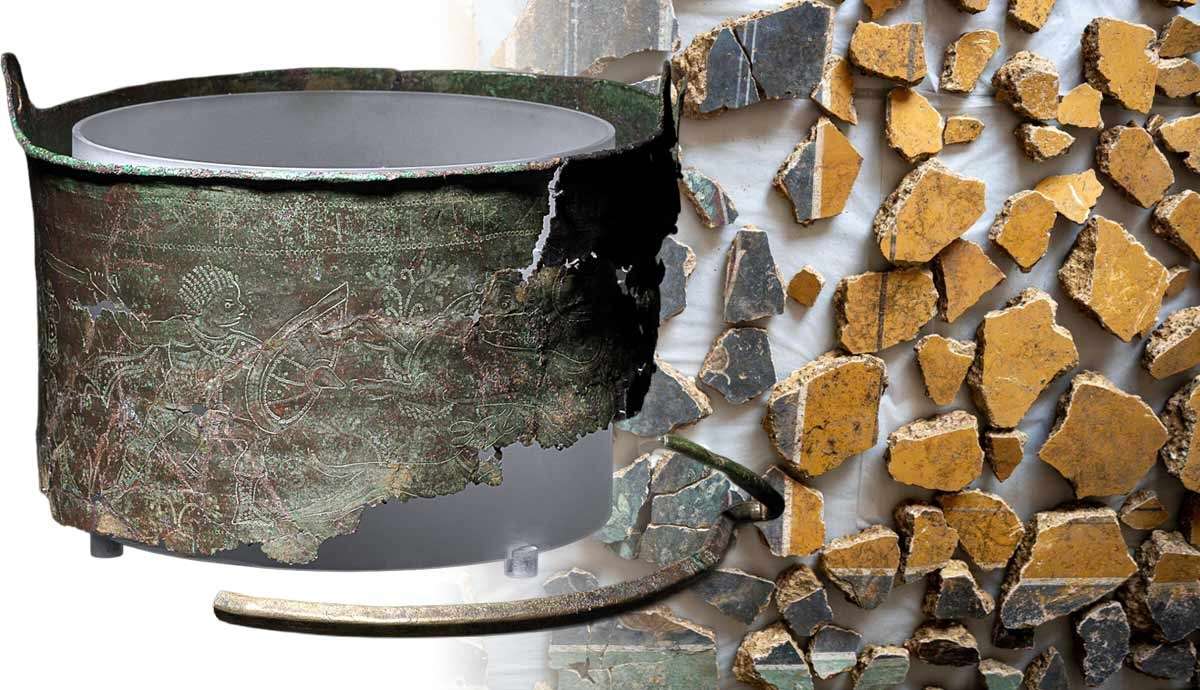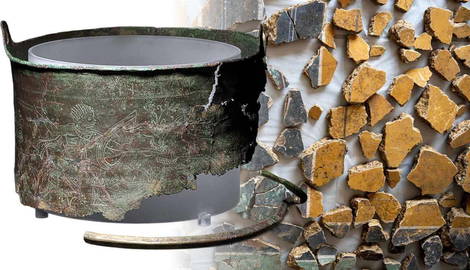
From lost royal tombs and underwater time capsules to mythic Greek sanctuaries and vibrant Roman frescoes, 2025 is already shaping up to be a landmark year for archaeology. These top archaeological discoveries span thousands of years and multiple continents.
1. Valley of the Kings: Thutmose II’s Long-Lost Tomb?

Early this year, archaeologists working in Egypt’s famed Valley of the Kings announced what may be the burial site of King Thutmose II, who ruled from 1493 to 1479 BCE. The discovery was hailed as the first royal tomb to be found since King Tut—and as the last missing royal tomb of the New Kingdom’s 18th Dynasty.
Mohamed Ismail Khaled, secretary-general of Egypt’s Supreme Council of Antiquities, described the royal tomb as “one of the most important archaeological discoveries in recent years,” as it was the first time the funerary furniture of this particular king had been identified.
2. Dionysian Frescoes Found in Pompeii

About a century before the ancient Roman city’s destruction, artists adorned the walls of a Pompeii banquet hall with a peculiar procession. Extending across three walls, the frieze depicts followers of Dionysus, the ancient Greek god of wine, fertility, theatre, and religious ecstasy.
The discovery reveals rare insights into the Dionysian Mysteries, secretive initiation rites practiced by the Cult of Dionysus in ancient Greece and Rome. The exact details of these rituals were closely guarded and eventually faded into obscurity. Figures in the Pompeii frieze confirm the use of dance, music, and intoxication to induce ecstasy during the Dionysian Mysteries.
3. Mystery of Sutton Hoo’s Bromeswell Bucket Solved

A 6th-century Byzantine bucket, known as the “Bromeswell Bucket,” was found at the Anglo-Saxon burial site of Sutton Hoo in Suffolk. The purpose of the bucket had long perplexed historians until a recent discovery confirmed that it had been repurposed as a cremation urn. The remains of a horse and evidence of a funeral pyre at the burial indicate the bucket was used in a high-status cremation ritual. This finding sheds new light on elite burial practices and cultural exchanges in 6th-century England.
4. Ancient Basilica Beneath the British Capitol

Archaeologists have discovered that a central London skyscraper is built on the foundations of a vast Roman basilica, dating back to around 78–84 AD. Its discovery reveals the scale and sophistication of urban planning in Londinium. The basilica, one of the largest Roman buildings ever discovered in the UK, likely served as an administrative hub for legal proceedings, commerce, and public gatherings in the capital of Roman Britain. Plans are in place to preserve the site and incorporate it into the building’s basement as a public exhibition.
5. Sanctuary of Odysseus

On the Greek island of Ithaca, archaeologists identified what may be an ancient sanctuary dedicated to the legendary Odysseus. Excavations at the archaeological complex, which was already known as the School of Homer, revealed a variety of votive offerings and inscriptions bearing the name “Odysseus.”
Additionally, the presence of both Mycenaean and Hellenistic artifacts suggests that worship at the site spanned many centuries. While the Sanctuary of Odysseus may not prove the existence of the Homeric hero, it does demonstrate how the myth shaped reality in ancient Greece.
6. Roman Frescoes Reborn in London

In London, experts painstakingly reassembled over 400 fragments of Roman frescoes into a decorative mural featuring birds, lyres, ivy leaves, and a Greek inscription in graffiti. Dating back to the 1st or 2nd century CE, the frescoes once decorated the walls of a Roman townhouse or public building in Londinium. Their vivid colors and refined composition demonstrate expert craftsmanship and the influence of Mediterranean artistic traditions in Roman Britain.
7. Scotland’s Ancient Giants: Timber Halls Predating Stonehenge

Beneath a school playground in a Scottish town, archaeologists unearthed traces of a Neolithic hall and its companion building, which date back 6,000 years. The timber hall predates Stonehenge by over a thousand years and is the largest ever found in Scotland. The excavation site yielded ritual pits and a hoard of Bronze Age weapons, including a Celtic gold-inlaid spearhead. Other artifacts, which came from the Highlands and Arran, suggest wide-reaching social organization and ritual activity in prehistoric Britain.
8. A Sunken Time Capsule in a Roman Shipwreck

Off the coast of Türkiye’s Antalya province, SCUBA-diving archaeologists uncovered a remarkably intact Roman-era shipwreck. It was submerged about 148 feet below the surface of the Mediterranean Sea. The vessel contained hundreds of sealed amphorae that had been perfectly preserved for nearly 2,000 years. These were likely used to transport goods such as wine, olive oil, and tableware. Nicknamed the “Ceramic Wreck,” this top archaeological discovery offers important insights into ancient maritime trade.










